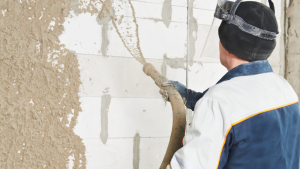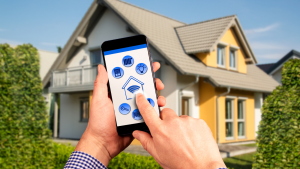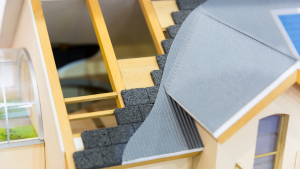The journey of smart home technology started with simple systems that could turn lights on and off and control thermostats. Over time, these systems have become more advanced and now connect many parts of a home. Today, smart homes make life easier, safer, and more efficient by allowing homeowners to control and check their homes using their smartphones or voice commands.
With almost forty years of experience, CMB East Brunswick Stucco & EIFS has built strong ties with homeowners, businesses, and builders. We handle everything from Manhattan skyscrapers to prestigious estates in New Jersey and New York. Let us assist you in choosing the best options for your project. We’re eager to work with you!
Similar Smart Technologies Available in Home Environments
Smart home technology includes many different devices and systems designed to improve your home life. Some of the most popular smart technologies available today are:
- Smart Lighting: You can control the brightness and colour of your lights with an app or your voice. These lights can be set to change automatically based on the time of day or when someone enters a room.
- Smart Thermostats: Devices like the Nest Thermostat learn your schedule and preferences to keep your home comfortable while saving energy and money.
- Smart Security Systems: These systems include smart locks, video doorbells, and security cameras that let you monitor your home in real-time and receive alerts if something unusual happens.
- Smart Appliances: From refrigerators that keep track of your groceries to ovens you can preheat remotely, smart appliances make everyday tasks easier.
- Voice Assistants: Devices like Amazon Echo and Google Home let you control other smart devices with your voice and can help with tasks like playing music or setting reminders.
Seamlessly Blending Technology with Design
Smart home technology doesn’t have to look out of place in your home. Many smart devices are designed to be stylish and blend in with your home’s décor. For example, smart light switches and plugs can look just like regular ones, and smart speakers and hubs often have sleek, modern designs. You can also choose finishes and colours that match your home, so the technology enhances the look of your home instead of standing out.
Sustainability
Smart home technology can help you live more sustainably. Smart thermostats and lighting systems can reduce energy use, which lowers your utility bills and is better for the environment. Smart irrigation systems make sure your garden gets the right amount of water without wasting any. Plus, many smart appliances have energy-saving modes and can give you tips on how to use less energy.
Future Trends in Smart Home Technology
The future of smart home technology is exciting, with several trends to watch for:
- AI-Powered Homes: Artificial intelligence (AI) will elevate smart homes to new levels by learning your habits, routines, and preferences over time. This advanced learning capability means your home can proactively adjust settings such as lighting and temperature and even suggest meal plans based on your schedule and dietary preferences. For example, if you usually lower the thermostat before bedtime, AI will do it automatically, ensuring comfort and energy savings.
- Interconnected Ecosystems: The future of smart homes will feature seamless interoperability between devices from different brands. Enhanced compatibility standards and protocols will allow smart devices to communicate and work together effortlessly, creating a more integrated and cohesive smart home network. This will streamline management, making it possible to control everything from a single interface, whether it’s your smartphone, voice assistant, or a dedicated control panel.
- Health Monitoring: Smart home technology is increasingly focusing on health and wellness. Advanced sensors and devices will continuously monitor aspects such as air quality, humidity levels, and sleep patterns, providing valuable insights and recommendations to improve your living environment. Some devices will be equipped with capabilities to detect falls or medical emergencies, automatically alerting emergency services or designated contacts, thus providing an added layer of security for elderly or vulnerable family members.
- Sustainable Innovations: With growing awareness of environmental issues, the development of eco-friendly smart devices and systems is accelerating. These innovations will prioritize energy efficiency and conservation, incorporating features such as solar power integration, energy usage monitoring, and automated systems that optimize energy consumption based on real-time data. For instance, smart irrigation systems will adjust watering schedules based on weather forecasts, significantly reducing water wastage.
Conclusion
The integration of smart home technology is changing the way we live by making our homes more convenient, secure, and energy-efficient. Starting from simple systems, smart homes have evolved into complex networks that we can easily control with our smartphones or voice commands. With future advancements in AI, interconnected ecosystems, health monitoring, and sustainable innovations, the possibilities for smart home technology are endless. Embracing this technology not only keeps us up-to-date but also helps create a better, more sustainable future for everyone.




